SOLUTIONS


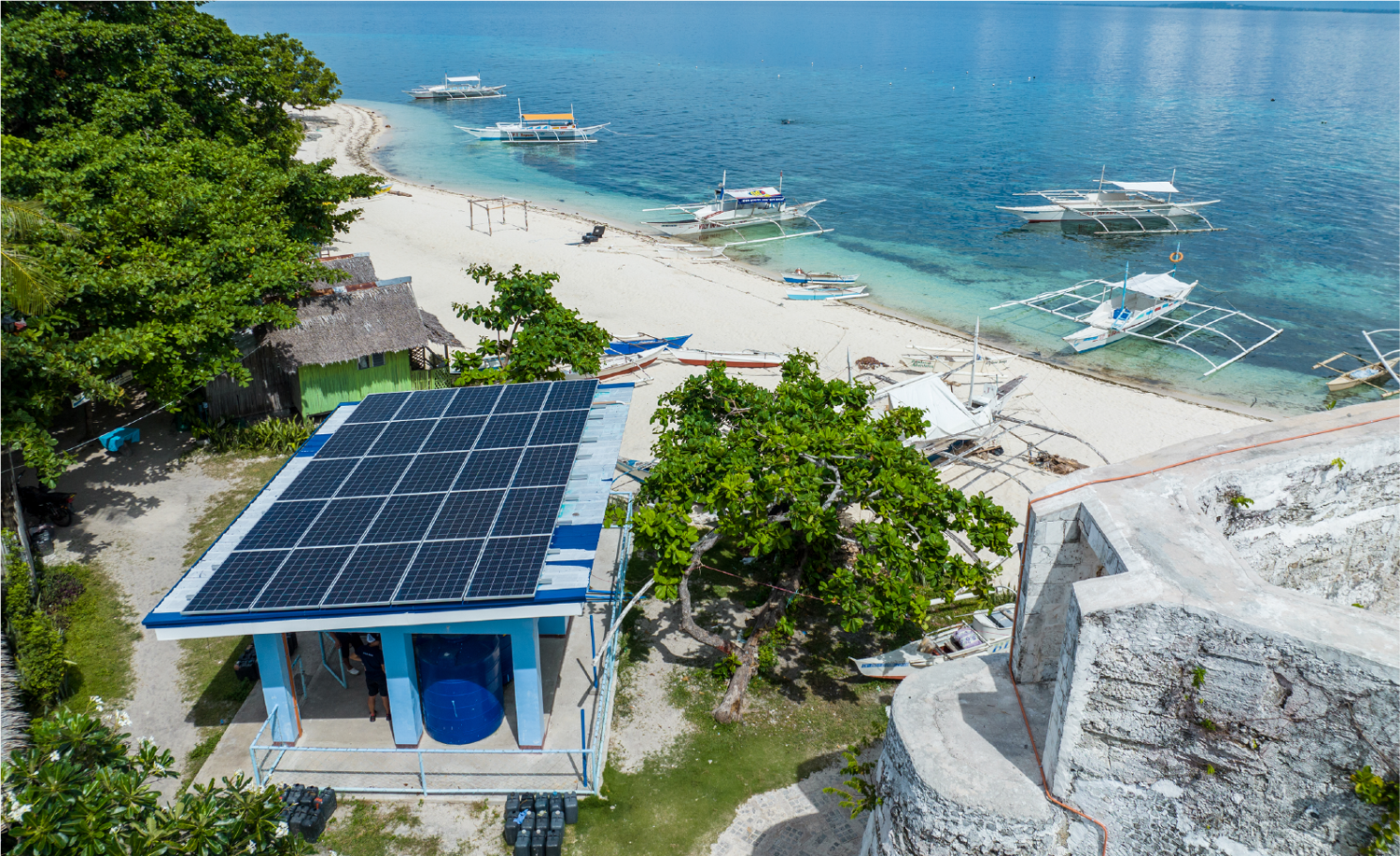
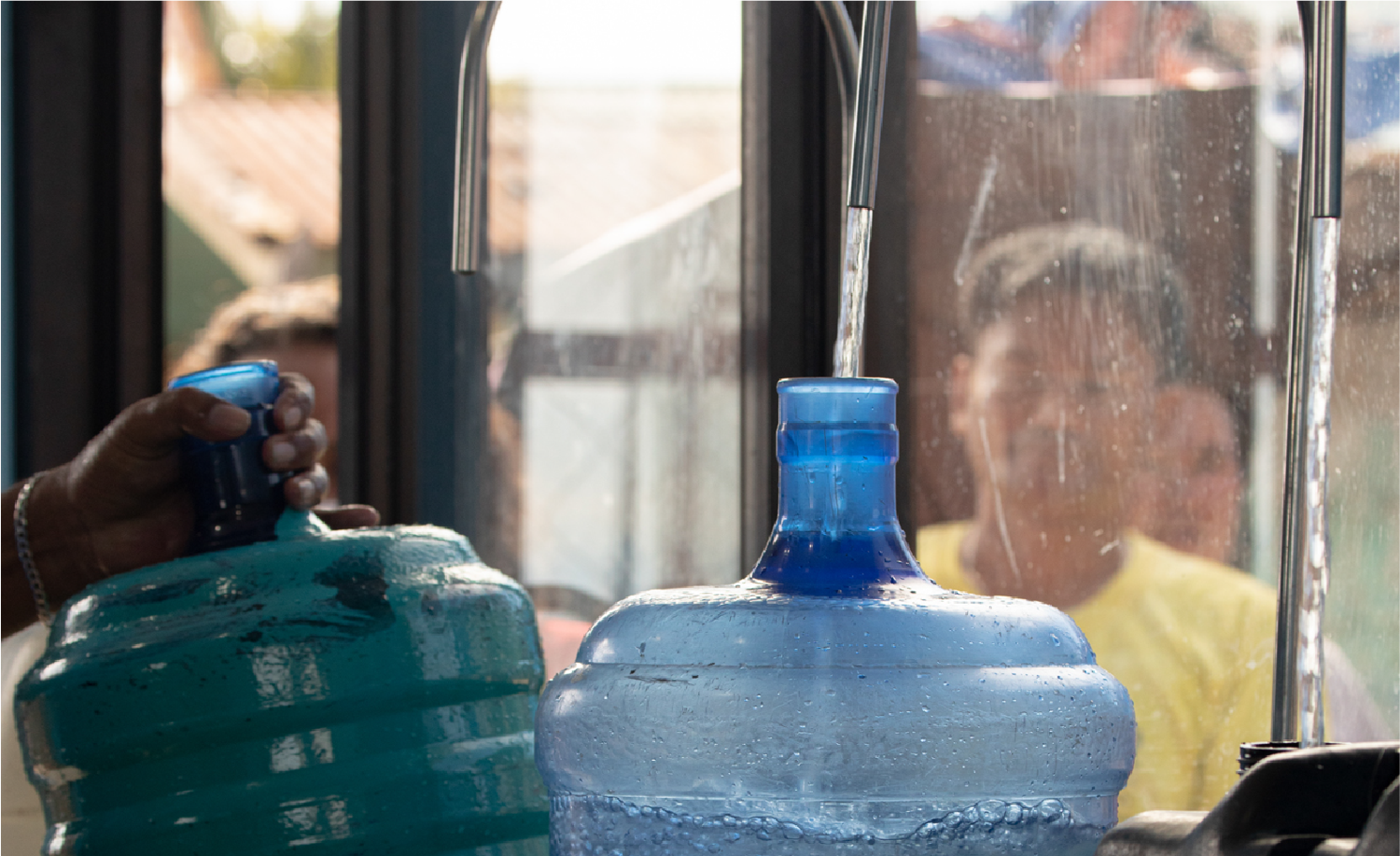
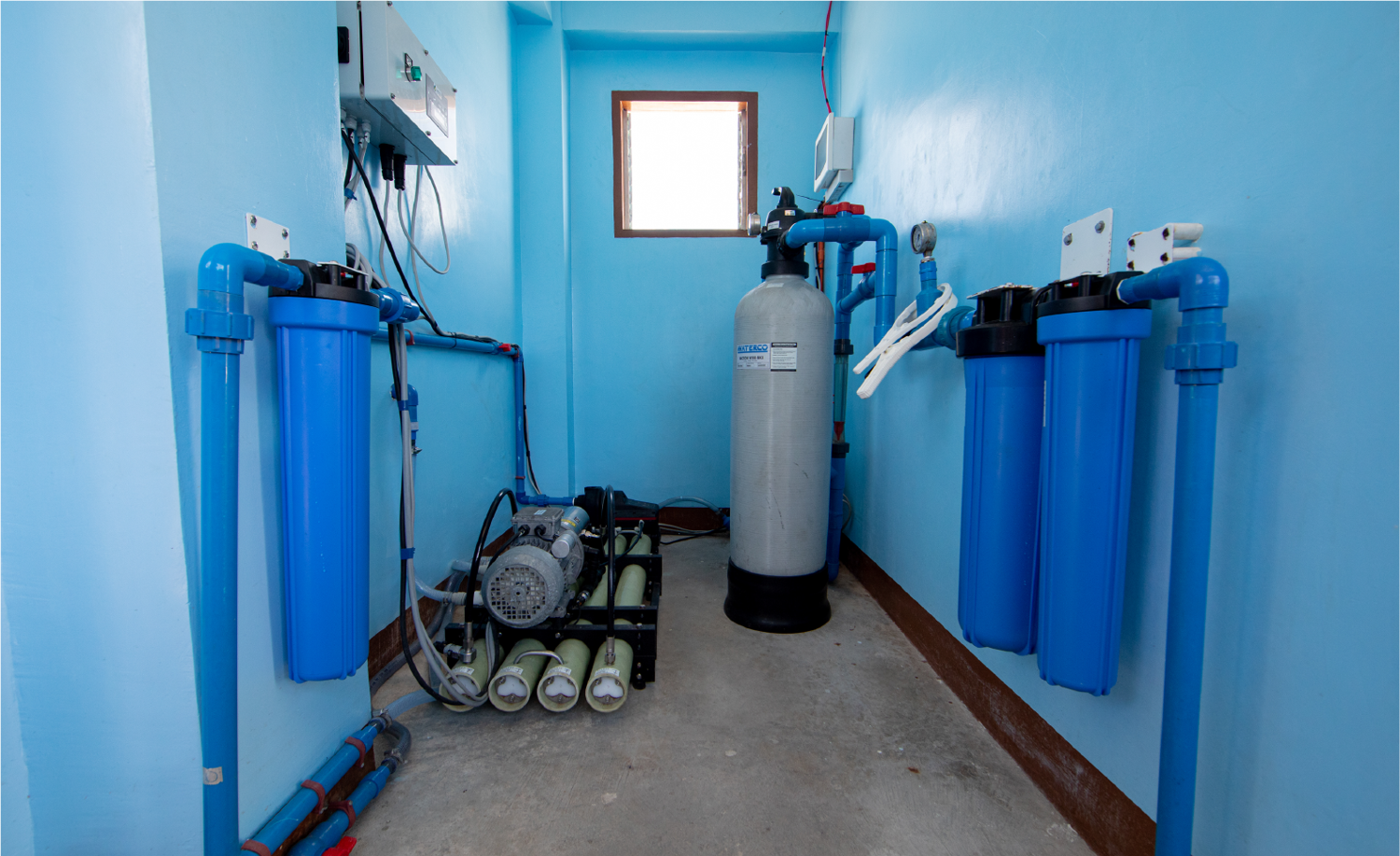
HYDRA
The Hydra is a fully turnkey system, which features highly energy efficient key technology that is able to reuse and recycle the salty water flow of the reverse osmosis process.
Designed to be modular, housed within a 30-50 sqm concrete structure, the Hydra produces high quality potable water up to 100,000 liters per day or more. It uses cutting edge pressure exchange technology that captures energy of the pressurized brine outflow back into the system, which enables efficient small scale water production.
Solar integration is also done for sustainable off - grid power — especially for island deployments or areas that do not have stable or cost-efficient electricity sources.
This means a reduced cost and use of fossil fuels and grid electricity for operation, making it a sustainable solution using unlimited renewable resources of the sea and sun. Capacities: 5,000 liters per day, 11,000 liters per day, 22, 000 liters per day *stackable system
NXTLVL HYDRA VS OTHER DESALINATION
NXTLVL HYDRA SOLUTION
TRADITIONAL DESALINATION SOLUTION
Power Savings Technology
- 100% energy savings for fully solar powered Hydra.
- Can run up to 3 days only using stored solar power (battery).
- Ultra-efficient desalination process, less than 3.5 kWh per cubic meter produced.
- Dependent on either grid power or diesel generator (both costly).
- Unable to function in disaster scenarios of grid outage or fuel scarcity.
- Usually 15-16kWh per cubic meter produced.
Cost Effectiveness
- 100% Self Sufficient: water sales at extremely low prices (e.g PHP 7.oo per 5 gallon jug vs normal PHP 25.00) can cover maintenance, operator salaries, all other operating costs.
- Dependent on either grid power or diesel generator (both costly).
- Unable to function in disaster scenarios of grid outage or fuel scarcity.
Environmental Impact
- Eco-Friendly Operation: The Hydra uses sustainable materials and processes, minimizing its ecological footprint.
- Marine Life Preservation: Hydra's intake system includes protective measures to prevent harm to marine organisms.
- Environmental Harm: Traditional desalination processes harm marine life with high salinity brine discharge.
- Non-Biodegradable Waste: Traditional systems produce waste that poses disposal challenges.
Rapid Deployment
- Quick Setup: Hydra can be deployed and operational within a short timeframe, addressing water crises promptly.
- Emergency Readiness: Its portable design allows for rapid relocation during disaster relief operations.
- Time-Consuming Installation: Traditional systems involve complex and lengthy installation processes.
- Impractical Mobility: Traditional setups are difficult to relocate quickly during emergencies.


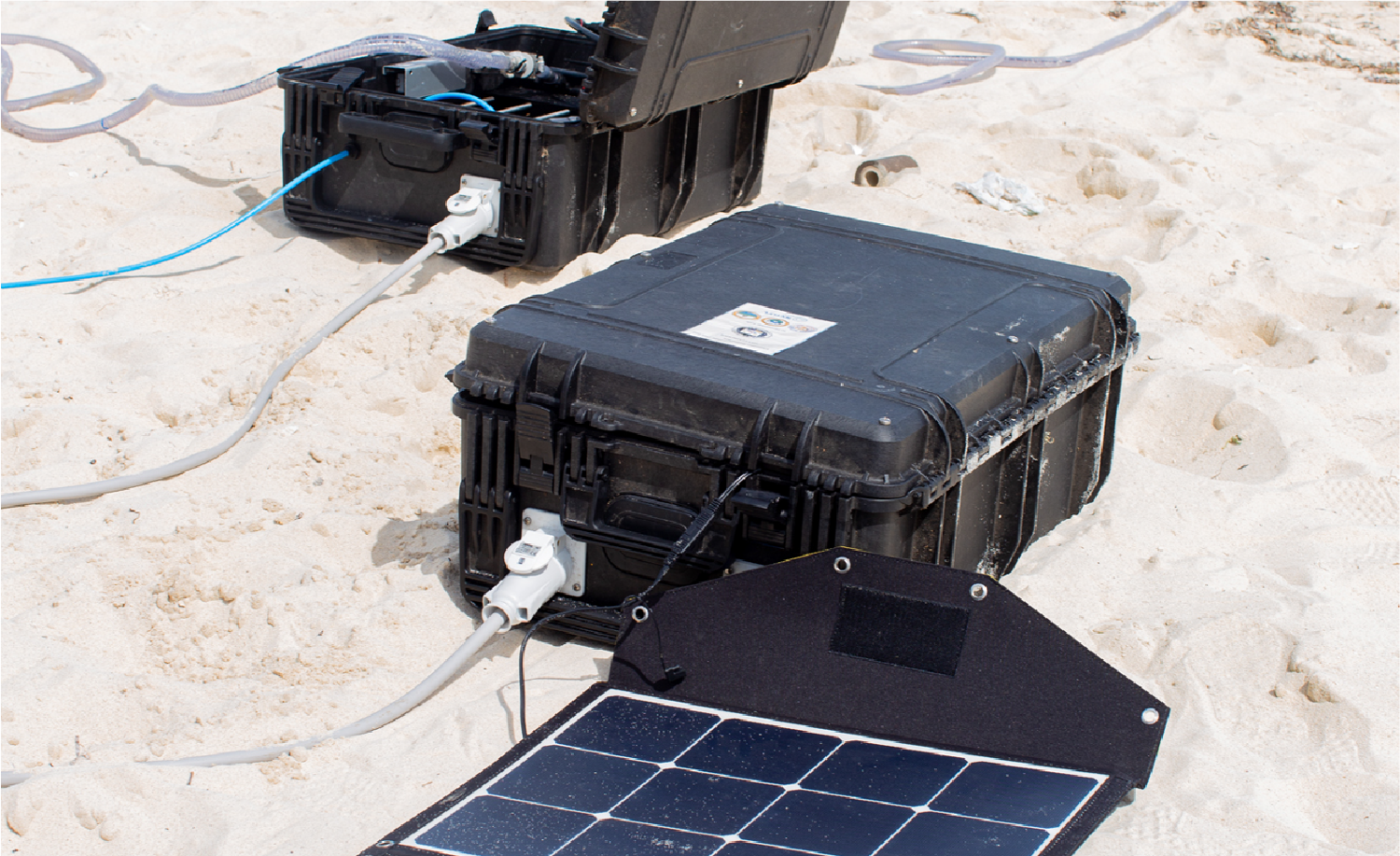
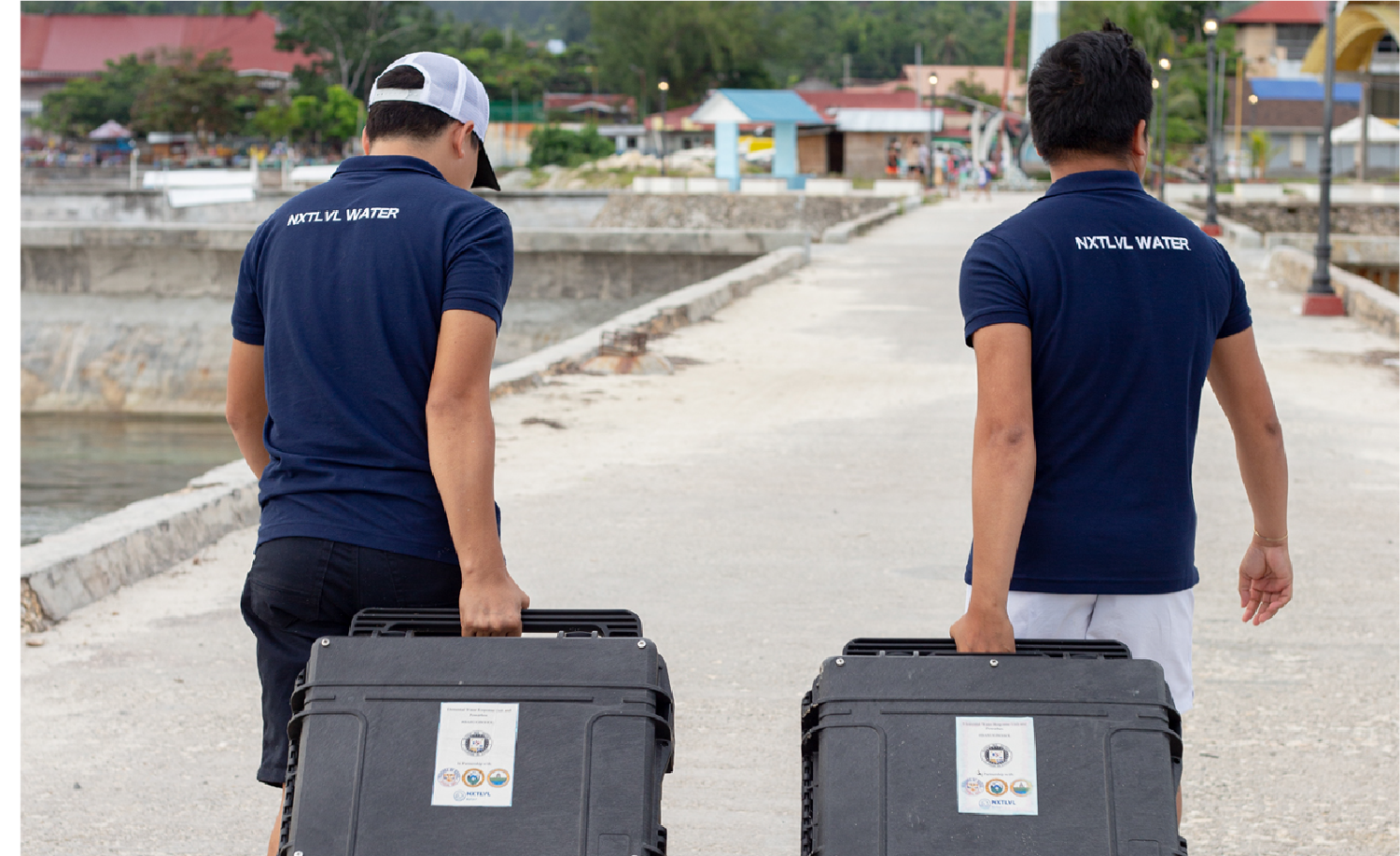
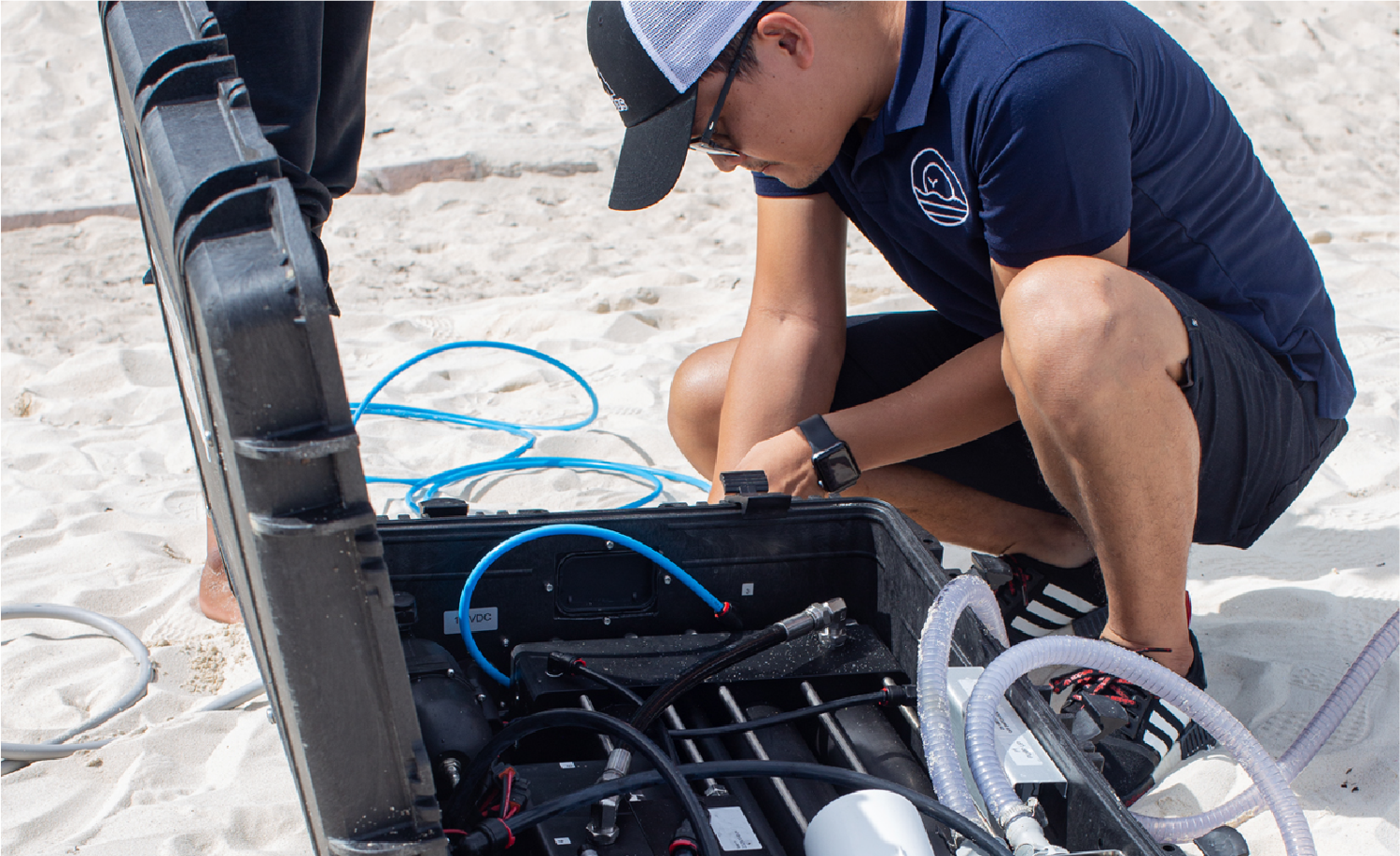
EWR
The Emergency Water Response unit or EWR is a portable water solution made to directly address potable water needs specifically in post-disaster scenarios.
Designed for rapid deployment, the EWR units are encased in military grade suitcases and are self-powered using only the built-in solar and battery package to avoid reliance on generators & fuel which are often not available in typhoon aftermaths.
Each EWR unit can produce high quality potable water from almost any water source (e.g. sea, river, pond, lakes, brackish water, etc.) for up to 1,000 individuals on a daily basis. Capacities: 1,200 liters per day
NXTLVL EWR VS OTHER PORTABLE FILTRATION
NXTLVL EMERGENCY WATER RESPONSE
TRADITIONAL PORTABLE FILTRATION
Power Savings Technology
- 100% energy savings for fully solar powered EWR
- Can run up to 12 hours only using stored solar power (battery)
- Dependent on either grid power or diesel generator (both costly)
Cost Effectiveness
- 100% Self Sufficient: can fully run using only solar power
- Cost Savings: versus deploying bottled water which usually costs around PHP10 - PHP 15 per bottle or big water treatment solutions
- Difficult and expensive to deploy due to its huge size and power needs.
Versatility
- Water Source Flexibility: EWR's adaptability allows water extraction from various sources, ensuring accessibility even in remote areas.
- Emergency Aid: Can be deployed swiftly to provide immediate relief in disaster-hit regions.
- Limited Water Source Compatibility: Traditional systems struggle to utilize diverse water sources effectively.
- Delayed Response: Traditional methods may take longer to reach affected communities during emergencies.
Easy-to-use Interface
- Simple Operation: EWR's intuitive interface requires minimal training to operate effectively.
- Remote Monitoring: The system can be remotely managed and monitored, reducing the need for on-site personnel.
- Complex Control Systems: Traditional units may necessitate skilled personnel for operation and maintenance.
- On-Site Supervision: Traditional systems often require constant on-site monitoring and management.
